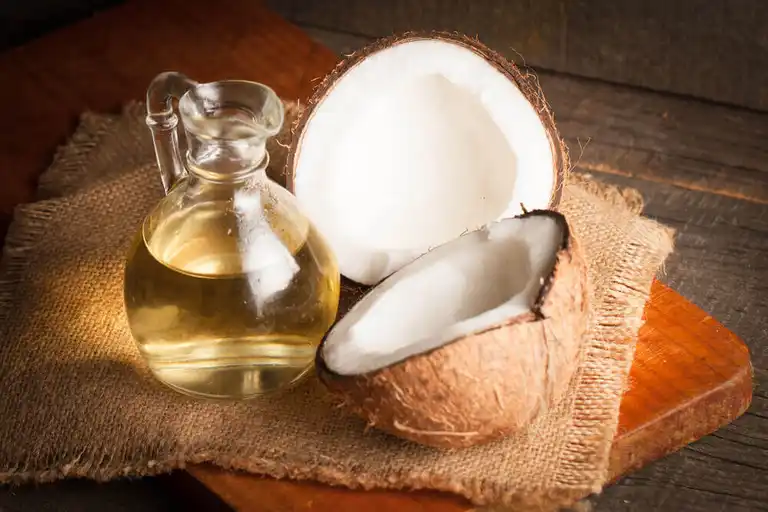Three Natural Solutions to Clean Your Belly Button

Do you clean your belly button and dry it well after showering? This is a part of the body that we often overlook, although dust and various particles can accumulate there.
Its correct hygiene can help prevent various infections. Of course, you have to proceed carefully, without getting irritated. For this reason, we’ll describe some natural solutions to clean your belly button in this article.
Why clean your belly button?
The dirt accumulated in the belly button area can lead to itching and redness. The reason? Due to a lack of hygiene, bacteria and fungi may have proliferated, generating infections that can also cause a bad smell.
And what causes it to get dirty? Some fabrics of the clothes we wear, the sand on the beach, the dead cells that are shed naturally from the skin or the fat produced by the body, among other elements.
Now, the moisture and dirt in the navel can become an ideal breeding ground for bacteria, which in turn can lead to omphalitis.
As pointed out in the article Uracosinus: A rare cause of recurrent omphalitis in adults, this is an infection that is usually related precisely to poor hygiene in the area.
To avoid this, we must clean our belly buttons every day. In addition, we have to make sure that it is completely dry, since, as we’ve already mentioned, keeping moisture in that area isn’t good.
However, the belly button is one of the parts of the body that we tend to ignore or forget, allowing it to accumulate traces of fat, dead cells, and dirt particles, with the consequences that we already mentioned.
Also read: Slugging, the Skin Care Trend You Need to Know About
How to clean your belly button naturally
We already know what to do (clean the belly button) and when (after taking a shower or a bath); Now we will know how to do it naturally. We’ll explain it to you. Keep reading.
1. Tea tree oil
One amazing property of tea tree oil is it’s an antifungal agent. Thus, it’s a great ally to fight infections and fungi that you may be exposed to if you don’t clean this part of your body properly.
The best way to use tea tree oil to clean your belly button is by applying a small drop of it on a cotton swab. Then, use it to clean your belly button thoroughly.
However, make sure not to overdo it with the oil because it can irritate your belly button’s delicate skin.
2. Rosemary alcohol
Rosemary alcohol is a very important natural remedy if you suffer from omphalitis. A bad smell in the belly button can be quite unpleasant, and rosemary alcohol will help us clean the area while leaving a good aroma.
This is due to its properties, which make it an essential complement for these cases. In addition, it doesn’t damage the skin. To apply it, you’ll also use a cotton swab.
Now, it’s recommended that you’ve previously cleaned the area a little, washed it with soap, and you’ve dried it very well. Then, apply the rosemary.
3. Coconut oil
The last natural solution you can use to clean your belly button is coconut oil. However, you should only use it after having sanitized your belly button, either with tea tree oil or rosemary alcohol.
Since coconut oil is an amazing moisturizer, many people use it every day. However, it also has properties that reduce the bacteria that may have proliferated in your belly button.
This is why you should only use it after cleaning the area with the above options. This way, your belly button will be free from infections and problems.

Find out about Five Great Cosmetic Uses for Coconut Oil
Care when cleaning the belly button
In people, the belly button is usually a delicate area. In fact, if you ever handled it a bit, you might have noticed it turn a little red.
But this does not mean that we should stop cleaning it. Quite the contrary: it’s one more reason to do it. Of course, we must proceed with caution and delicacy.
In this regard, you should take into account the following tips:
- Never use your fingernails or fingertips to try to clean out a dirty, sticky navel.
- Don’t use the same swab twice: if you had one with water to clean at the beginning, change it and take another one to apply any of the products mentioned.
- Don’t use ethyl alcohol: this compound dries out the skin and can clog pores or increase sebum production.
- Blot dry with a soft cloth or another cotton swab. Don’t let any moisture remain.
- With both the swabs and the towel, you should make gentle movements, avoiding putting pressure or pushing.
Pay attention to all your body parts
It’s possible that, up to this point, you hadn’t realized you completely ignored your belly button. From now on, we want to insist on the importance of cleaning the belly button well and drying it after getting out of the shower. Thus, you will prevent skin diseases and other problems that can affect this area of the body.
Similarly, if you’ve ever experienced symptoms such as irritation, itching or redness, or any other that indicates that something is wrong, don’t hesitate to see your doctor, who will recommend a suitable cream to resolve the infection.
After this, it’s a good idea for you to take into account the advice given here to prevent the same thing from happening to you again. So, we encourage you, at least once a week, to use the solutions that we have proposed to clean your belly button naturally.
All cited sources were thoroughly reviewed by our team to ensure their quality, reliability, currency, and validity. The bibliography of this article was considered reliable and of academic or scientific accuracy.
- Galindo, J., González, N., Delgado, D., Sosa, A., González, R., Torres, V., … & Cairo, J. (2009). Efecto del aceite de coco en la población de bacterias metanogénicas y su relación con otros grupos microbianos del rumen en condiciones in vitro. Revista Cubana de Ciencia Agrícola, 43(2).
- Martinello, M.A., & Pramparo, M.. (2005). Poder Antioxidante de Extractos de Romero Concentrados por Destilación Molecular. Información tecnológica, 16(5), 17-20. https://dx.doi.org/10.4067/S0718-07642005000500004
- Pérez Mendoza, Magdialis, & Berasategui Hernández, Kenia. (2015). Caracterización clínico-epidemiológica de la onfalitis en un servicio de Neonatología. Medicentro Electrónica, 19(3), 157-159. Recuperado en 28 de marzo de 2019, de http://scielo.sld.cu/scielo.php?script=sci_arttext&pid=S1029-30432015000300004&lng=es&tlng=es.
-
Terzi V, Morcia C, Faccioli P, Valè G, Tacconi G, Malnati M. In vitro antifungal activity of the tea tree (Melaleuca alternifolia) essential oil and its major components against plant pathogens. Lett Appl Microbiol. 2007;44(6):613-618. doi:10.1111/j.1472-765X.2007.02128.x
-
Ogbolu DO, Oni AA, Daini OA, Oloko AP. In vitro antimicrobial properties of coconut oil on Candida species in Ibadan, Nigeria. J Med Food. 2007;10(2):384-387. doi:10.1089/jmf.2006.1209
This text is provided for informational purposes only and does not replace consultation with a professional. If in doubt, consult your specialist.








